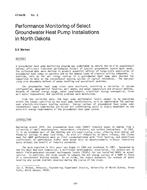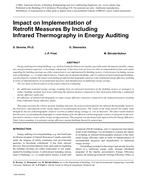Belly spaces in manufactured homes provide a challenge when characterizing the thermal performance of forced-air distribution systems. In most site-built houses, ducts do not leave one unconditioned space, enter another, and then return to the first space. In manufactured homes with crossover ducts, this is essentially what happens. The result is that the ducts on the same section as the furnace are unaffected by the crossover duct, whereas ducts in other sections are negatively affected by any losses at the crossover. These characteristics can cause duct thermal efficiency models, such as the one in ANSI/ ASHRAE Standard 152-2004, Method of Test for Determining the Design and Seasonal Efficiencies of Residential Thermal Distribution Systems, to provide inaccurate results. In the course of a field study of the thermal efficiency of duct systems in manufactured homes, models were developed that corresponded to different duct system types. These types included single-wide systems, double-wide systems with a crossover duct, and a double-wide system with a perimeter duct system that went all the way around the home with no physical termination. In addition, some of the measurements made were targeted at characterizing the difference in temperatures between the belly space and the crawl space below. This paper presents these temperature results and provides the equations for the modeling of different types of systems.
Units: I-P
Citation: ASHRAE Transactions, vol. 113, pt. 2
Product Details
- Published:
- 2007
- Number of Pages:
- 9
- File Size:
- 1 file , 240 KB
- Product Code(s):
- D-LB-07-009


